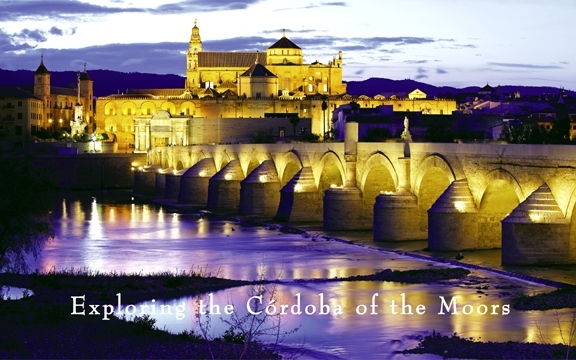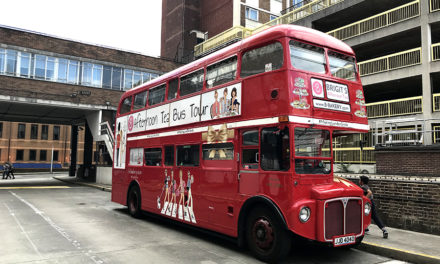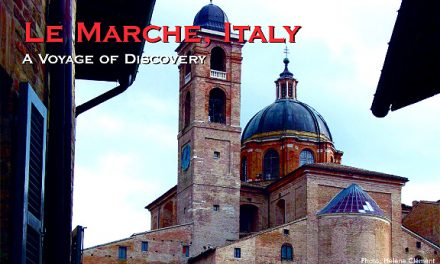Spain
Exploring the Córdoba of the Moors
Article & Photography by Habeeb Salloum

Calling it “the gem of the world”, the 9th century German nun, Hrosvitha went on to describe Córdoba, Arab Spain’s capital:
“In the western part of the globe, there shone forth a beautiful ornament – a city well cultured – rich and known by the famous name of Córdoba, illustrious because of its charms and renowned for all resources, especially abounding in the seven streams of knowledge, and ever famous for continual victories.”
With these words Hrosvitha described Córdoba at the pinnacle of its grandeur when it was the capital of Moorish Spain and the cultural and intellectual heart of Europe. At that time, the city had a population of 1,000,000 literate inhabitants. Miles of its avenues were paved and brightly lit. Sewers carried away the refuse and well-kept parks dotted the town.
Above all, the city was famous for its libraries – a number boasting some 400,000 volumes and more – thousands of ornamented villas and palaces, countless baths and splendid mosques. Amid this splendour, Muslims, Christians and Jews lived together in harmony and made the city Europe’s greatest centre of art, culture and learning.
Today, the city’s population is reduced to some 330,000, but it still retains traces of that fabulous age. In its clean-narrow streets; seemingly always newly whitewashed houses; flower-filled courtyards; churches, many of which were once former mosques; its old Jewish Quarter, one of the best preserved in Europe; and a host of other Moorish remains, one can visualize what Córdoba was like in its days of Arab-Muslim splendour.
Overshadowing all these time-honoured remains is the Mezquita-Catedral – once the city’s Great Mosque. A masterpiece of Muslim art, the Mosque is said to have influenced the architecture of Europe’s medieval Christian churches. Its forest of 800 columns, topped by ornate capitals, its striking double horseshoe arches in alternating hues, and its magnificent mihrab with its dazzling colours reflect the mosque’s more than one thousand years of splendour.
Edging the Mezquita is the Judería, the old Jewish Quarter, so-called because it became a Jewish ghetto after the Christian conquest. In the Moorish age, the inhabitants were mostly Muslims with a sizeable percentage of Christian and Jews.
The Quarter stretches two blocks westward from the Mezquita to the old city walls and five blocks northward to the beginning of Avenida del Gran Capitan. Whitewashed houses, adorned by flowering plants dripping from window boxes, border its labyrinth of fascinating narrow alleyways. As one strolls the maze of lanes, glancing through open doorways, each flower-filled courtyard appears to be more stunning than the next.
Historic monuments, museums and other tourist-drawing sites dot the whole of the Judería. A few feet north of the Mezquita, is the Callejón de las Flores (alley of the flowers), well-known for its hanging flower baskets and exquisite patios overflowing with shrubs, ceramics and wrought-iron grills – a legacy of the Moors. From a tiny plaza at the end of the alley, there is a colourful perfectly framed view of the belfry of the Mezquita – a photographer’s dream.
A few yards to the west of the Mezquita is Palacio Episcopal, built on the ruins of the Caliph’s palace, and next door is the Alcázar de los Reyes Cristianos which, after the Christian conquest, was built as an abode of the Catholic Kings, Ferdinand and Isabella. Famous for its flower-saturated patios and gardens with their pools and spouting fountains, it is a worthwhile stopover after a visit to the Mosque.
Visitors pass the statue of Averroës, a renowned Arab-Córdoban philosopher, then walk through the Puerta Almodóvar, the ancient gateway of the Jews, to enter the Judería. To the right, on Calle Judias, is the Synagogue – the only historic one in Andalusia, and not too far away is the statue of Maimonides, the Jewish philosopher who wrote almost all his works in Arabic – the intellectual language of his day.
Practically next door, the Soco, an old Arab souk (market), has been turned into a crafts arcade where artisans are at work producing leather and silver products mostly for sale to tourists. In the summer evenings when relative coolness comes to Córdoba, amateur flamenco dancers make the street a favoured nightspot.
To the south of the Mezquita is the Moorish restored Roman bridge spanning the Guadalquivir River (from the Arabic – Wadi al-Kabir (large river). Edging it are the ruins of Arab grain-mills – one with a renovated waterwheel or noria (from the Arabic na’ura). Standing guard at the bridge’s end across the river is Torre de la Calahorra, a former fortress housing the Museo Vivo de la Andalus. Using high-tech virtual reality headphones, a visitor will experience the living culture of Moorish Spain, its people, science, technology and music.
To the east of the Mezquita lies Plaza del Potro, one of Córdoba’s landmark squares. It is mentioned by Cervantes in Don Quixote and once had a villainous reputation. A little to the north, Plaza de la Corredera, a colonnaded square, once witnessed bullfights and the burnings of the Inquisition. Further on, the Archaeological Museum, houses a collection of Iberian, Roman and Moorish artefacts.
Scattered between the Judería’s historic sites are numerous churches – many originally former mosques. These are of interest to a great number of travellers. However, above all, what annually lures thousands of visitors are the homes framed with wrought-iron doorways and courtyards filled with decorative tiles, spouting fountains and blooming flowers – a Moorish legacy. The blossoms are especially captivating during the annual May Festival of the Patios when households compete with hanging pots of flowers in the courtyards – their perfume intoxicating travellers and inhabitants alike.
During these celebrations in this urban centre of caliphs, one will be able to appreciate the magnificent legacy of the Arabs in Spain. Even though the city has been lost by the Moors for more than 780 years, their memories and handiwork are still very much alive, enticing an ever-increasing number of visitors.
www.spain.info
Click on cover to view published article






